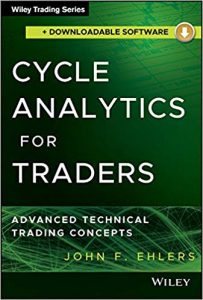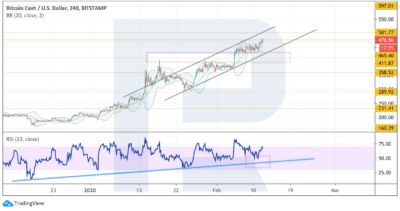Currency Swaps Definition
Contents:

At termination, the notional principals are returned to the appropriate party. Company A would have to return the notional principal in real back to Company B, and vice versa. The terminal exchange, however, exposes both companies to foreign exchange risk, as the exchange rate may shift from its original 1.60BRL/1.00USD level. Currency swaps are over-the-counter derivatives, and are similar to interest rate swaps covered already in this volume except that in cross-currency swaps the principal amounts are in different currencies. Also, unlike interest rate swaps, cross-currency swaps can involve the exchange of the principal. Even where there is no exchange of principal, the counterparties are subject to the foreign exchange rate fluctuation during the substance of the trade.

One is a UK https://forexhistory.info/ looking to expand into the US and one is a US business looking to expand into the UK. If they both take out loans in the countries they’re keen to expand into, then the interest rates may be high for both. Instead, they could both take out loans in their own countries and currencies at a more reasonable rate and swap them. To defend against financial turmoil by allowing a country beset by a liquidity crisis to borrow money from others with its own currency, see Central bank liquidity swap.
A currency swap is a contract between two parties where one side agrees to pay interest and principal based on a certain exchange rate and the other side pays a variable interest rate . An FX swap agreement is a contract in which both parties agree to exchange one currency for another currency at a spot FX rate. The agreement also stipulates to re-exchange the same amounts at a certain future date also at a swap FX rate. Fixed-fixed currency swap -Fixed-fixed currency swap entails the exchange of loans in various currencies, where interest flows are calculated based on the fixed rate. Governments and the Central banks engage in the currency swaps with their foreign counterparts in order to ensure that adequate foreign currency is available at the time if there is any foreign currency scarcity.
9.1 Valuation of currency swaps
While using a currency swap as a way to generate income can be useful, the greatest advantage of a currency swap for retail investors is the ability to hedge against volatility in the currency markets. With a currency swap an investor can reduce the volatility in their overseas holdings, thus improving their risk-return profile and smoothing out the ups and downs in their portfolio. Because currency rates are always changing currency swaps can help to smooth out profits and losses in any portfolio. In the case of swaps being made by businesses and institutions the reason currency swaps are done is typically as a hedge, or as a way to get cheaper financing.

They have led market makers at major dealers to explore cross-hedges in the form of FX products. Clients, such as investors or banks, that have an incentive to hedge interest rate or credit risk may face higher capital charges and costs on such hedges. If FX products can be devised by dealers that mimic interest rate or credit hedges due to higher correlations with these markets, this can be a more cost-efficient hedge solution for clients and a new revenue stream for dealers. The example also illustrates the continuing trends toward financial engineering solutions involving multiple asset classes and asset class correlations. With currency swaps, one of the parties does not want to take exposure to the exchange rate fluctuations.
While it is important to be very careful when you are making a currency swap, you will also have to be sure that you are following the correct procedures to avoid any legal issues. Commodity Hedging Agreements means, in respect of a Person, any commodity purchase contract, commodity futures or forward contract, commodities option contract or other similar contract , to which such Person is a party or a beneficiary. Swap means any agreement, contract, or transaction that constitutes a “swap” within the meaning of section 1a of the Commodity Exchange Act. Participations, Synthetic Securities, Asset Swap Agreements, Currency Swap Agreements, Interest Rate Swap Agreements and Securities Lending Agreements involve the Issuer entering into contracts with counterparties. The Currency Swap Counterparty may terminate the Currency Swap Agreements in the event that proceedings are taken against the Issuer to enforce payment of the Notes. FX swaps are also used by importers and exporters, as well as institutional investors who wish to hedge their positions.
Currency Swaps Explained
This anonymity may be very important to the trading banks, because it allows banks of different sizes and market positions to trade on an equal footing. 2.At settlement dates, interest will be paid and received in different currencies and according to the agreed interest rates. While it might appear that this is the most straightforward way to manage the transition, there are five main… Gains and losses are reclassified to the P&L as the hedged transactions (i.e. interest accruals and coupons and principal remeasurement) occur and matching is achieved within the financial statement line item. Another common type of Swaps is Currency Swap Agreements where the contracting parties exchange a specific amount in different currencies for a specific time period. An FX swap is a simultaneous purchase and sale of identical amounts of one currency for another with two different value dates, normally spot date and forward date.

The reason for this discrepancy in lending rates is due to the partnerships and ongoing relations that domestic companies usually have with their local lending authorities. Swaps can be used to hedge against exchange-rate risk, speculate on currency moves, and borrow foreign exchange at lower interest rates. In a currency swap, counterparties exchange equivalent amounts of two different currencies, and trade back at a later specified date. The Fed authorized new swap lines with Canada and the above countries in November 2011. The central banks made the agreements permanent until further notice in October 2013.
What Are The Basic Components Of Currency Swaps?
Cashflows in any other currency are first swapped into the funding currency via a cross currency swap and then discounted. Currency swaps are an essential financial instrument utilized by banks, multinational corporations, and institutional investors. Although these type of swaps function in a similar fashion to interest rate swaps and equity swaps, there are some major fundamental qualities that make currency swaps unique and thus slightly more complicated. A swap is a derivative contract through which two parties exchange financial instruments, such as interest rates, commodities, or foreign exchange. India and Japan signed a bilateral currency swap agreement worth $75 billion in October 2018 to bring stability to forex and capital markets in India. The foreign bank provides the equivalent amount of its currency to the Fed at the same time.
Over time, as interest rates implied by the curve change and as credit spreads fluctuate, the balance between the green zone and the blue zone will shift. If interest rates fall or stay lower than expected, the “receiver” of fixed will profit . If rates rise and hold higher than expected, the “receiver” will lose .
In either case, analysis can be performed to illuminate the pros and cons of each approach. At the https://forexanalytics.info/ of the swap agreement, the total value of the swap’s fixed rate flows will be equal to the value of expected floating rate payments implied by the forward LIBOR curve. As forward expectations for LIBOR change, so will the fixed rate that investors demand to enter into new swaps.
PLAINS ALL AMERICAN PIPELINE LP Management’s Discussion and Analysis of Financial Condition and Results of Operations (form 10-K) – Marketscreener.com
PLAINS ALL AMERICAN PIPELINE LP Management’s Discussion and Analysis of Financial Condition and Results of Operations (form 10-K).
Posted: Wed, 01 Mar 2023 12:15:11 GMT [source]
There is no principal exchanged at the outset, and the two parties are in a legally binding contract independent of the underlying lenders. Companies can agree to exchange interest rate payments to reduce the cost of borrowing or to guard against other uncertainties related to the underlying principal amount. The currency swap between Company A and Company B can be designed in the following manner. Company A obtains a credit line of $1 million from Bank A with a fixed interest rate of 3.5%. At the same time, Company B borrows €850,000 from Bank B with the floating interest rate of 6-month LIBOR. Company A now holds the funds it required in real, while Company B is in possession of USD.
Currency Swap Definition
The Fed added swap lines with the banks of Australia, Brazil, Denmark, South Korea, Mexico, New Zealand, Norway, Singapore, and Sweden. Liquidity is necessary to keep financial markets functioning smoothly during crises. The forward exchange market refers to buying and selling currencies to be delivered at a future date. The reason is that any loss of future income resulting from the default of counterparty will be compensated for by the removal of the liability under the swap.
- In Currency Swap Agreements, there is an exchange of principal both at the inception and termination of the agreement, while the payments between the two contracting parties at the settlement dates are not netted since they are in different currencies.
- Market Update Hot inflation and strong economic data add turbulence to Fed’s fight In a short week, FOMC minutes were released detailing the pace of rate hikes to combat inflation.
- 1.Two principals in different currencies and of equal value are exchanged at the start date t0.
- In order to collect or pay any overnight interest due on these foreign balances, at the end of every day institutions will close out any foreign balances and re-institute them for the following day.
- The most common use of foreign exchange swaps is for institutions to fund their foreign exchange balances.
Credit default swaps are an instrument to protect against default risk. Swap’s face values are $100 million and 110 million euros with a coupon interest of 3% for U.S. dollars and 4% for the euros. If Company XYZ liquidates the swap, the company must receive $61.9 million to sell the swap. News Kevin Jones explains to the Wall Street Journal why U.S. corporates are unlikely to extend their LIBOR transition U.S. companies consider their transition from LIBOR to SOFR as the June 30 deadline approached. In the Wall Street Journal, Kevin Jones explains why delaying the transition doesn’t appeal to most U.S. corporates. The Issuer is not obliged under the Currency Swap Agreements to gross up payments made by it under the Currency Swap Agreements if withholding taxes are imposed on such payments.
What to Know About Currency Swaps
It may involve swapping payments in one currency for payments in another. They can now select one currency as the funding currency and select one curve in this currency to be the discount curve. Future cash flows are then discounted at the market interest rate that is applicable at the time of valuation. The sum of the cash flows from the foreign currency are swapped into the funding currency at its spot price, and then discounted afterwards. Cross currency swaps differ to other interest-rate derivatives in that there will always be an exchange of a notional or face value amount.
- In particular it is a linear IRD, and one of the most liquid benchmark products spanning multiple currencies simultaneously.
- They would then deliver the bonds to their swap bank, who will switch them over to each other.
- Although the swap curve is typically similar in shape to the equivalent sovereign yield curve, swaps can trade higher or lower than sovereign yields with corresponding maturities.
- The FX swap, on the other hand, is like an exchange of two zero-coupon bonds in different currencies.
- For example, to speculate that five-year rates will fall using cash in the Treasury market, a trader must invest cash or borrowed capital to buy a five-year Treasury note.
If you open and close a trade within the same day, swap interest will not apply. Some of the high yielding currencies in forex include the Australian dollar and New Zealand dollar ; while low yielding currencies include the Japanese yen and the euro . Basically, if you buy a high yielding currency against a low yielding one, you will earn positive swap interest, but note that it can also go the other way around. There’s an option to avoid swaps whatsoever by opening a swap-free Islamic trading account.
https://day-trading.info/ is considered a benchmark interest rate that major global banks lend to each other in the interbank market for short-term borrowings. The spread stems from the credit risk, which is a premium that is based on the likelihood that the party is capable of paying back the debt that they had borrowed with interest. The two banks agree to swap these quantities of their two currencies back at a specified date in the future. The date could be as soon as the next day, or it could be as far ahead as three months. For this reason, these swaps carry no exchange-rate or other market risks.
The bulk of fixed and floating interest rate exposures typically cancel each other out, but any remaining interest rate risk can be offset with interest rate swaps. LIBOR is the benchmark for floating short-term interest rates and is set daily. Although there are other types of interest rate swaps, such as those that trade one floating rate for another, vanilla swaps comprise the vast majority of the market. Cross currency swaps are generally difficult to value, due to the different funding costs for each currency. Traditional trading rules would assume that the funding cost in each currency is equal to its floating rate, therefore giving a zero cross currency spread. However, investors have differing levels of access to different currencies around the world, and therefore, funding costs are not calculated the same as in the LIBOR, where we tend to calculate interest rates for UK trading.
